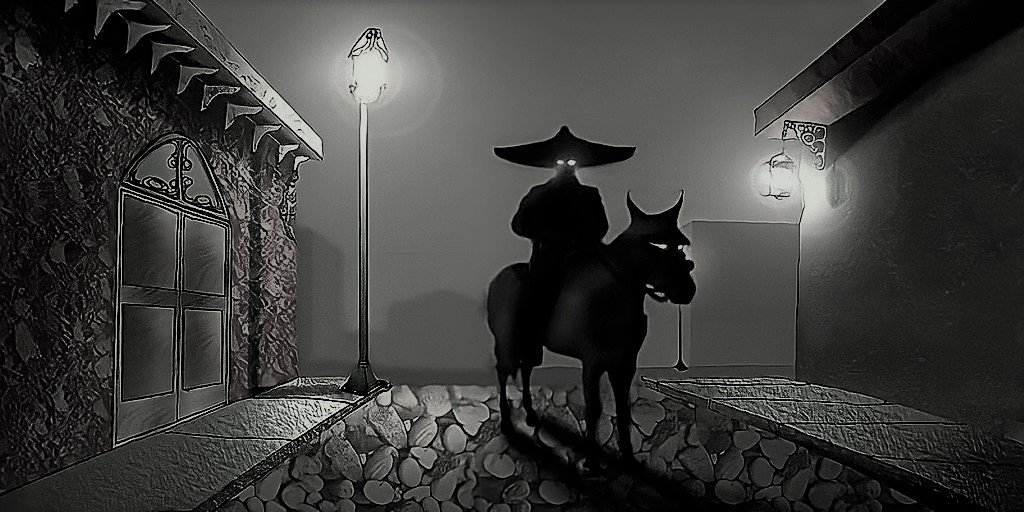The Haunted Mummies of Guanajuato, Mexico
In the city of Guanajuato, Mexico there is a museum filled with mummies with their mouths agape and eyes peeled back. But these mummies weren’t intentionally created and no one expected to find them back in 1865. So how exactly did these mummies come to be and is there any truth to the legends surrounding them and their hauntings?
Guanajuanto’s New Cemetery
In the early-to-mid 19th century Mexico went through several large changes including Mexico’s independence from Spain. After winning their independence, Mexico’s government slowly stripped power away from the Catholic Church that, until then, was completely intertwined with all aspects of governing.
Mexico’s new government held a similar view to other developing countries including the United States and implemented a separation of church and state. This meant several aspects of life that were once overseen by the church were now left up to the towns, cities, and states including creating and maintaining cemeteries.
In 1848 the city of Guanajuato opened the new Panteón Municipal Santa Paula Cemetery. Within the next decade, the cost of upkeep for the cemetery became too much and the city implemented a burial tax to be paid by the families of those buried.
Families had to pay a yearly tax for each of their interred family members, if the tax was not paid three years in a row then the bodies would be removed from the cemetery and placed in a warehouse until the tax was paid.
Accidental Mummies at Guanajuanto
In 1865 caretakers at the cemetery arrived at the above-ground crypt to remove french doctor Remigio Leroy’s body for non-payment. But when they opened his coffin they were shocked to find his body had been naturally mummified.
In the following years, caretakers would discover more mummified remains of those interred in the crypt, but these weren’t the typical mummies one would think of. None of these bodies were intended to be mummified and therefore their appearance can be one of terror.
The extremely dry and hot conditions of the area, coupled with the air-tight seal some of the crypts had, created the perfect conditions for mummification. As the bodies dried out the areas with the thinnest skin, such as the eyes and mouths, receded and their jaw muscles relaxed creating an appearance of screaming mummies in death. Many of the mummies also retained distinctive features including hair and scars giving a more “alive” appearance.
El Museo de Las Momias
Most of the bodies taken out of Santa Paula Cemetery were not mummified, but those that were were placed underground, lined up against the wall of an ossuary creating a macabre hallway of marching mummies.
Word began to spread of the accidental mummies and many wanted to see it for themselves. Caretakers started charging visitors to take a tour of the “hallway of horror” and as the number of mummies grew, so did the number of visitors willing to pay to see them. Many visitors even took souvenirs of the mummies including the small plaques with the mummy’s names.
In 1958 the burial tax in Guanajuato was repealed, which for the most part ended the discovery of more mummies. But the 117 discovered over the prior 93 years had become a tourist attraction.
Related Article: 5 Weirdly Interesting Museums Around the World
In 1968 the city of Guanajuato opened the Museo de Las Momias (The Mummy Museum) next door to the cemetery. The mummies were now displayed behind glass cases but unfortunately many were left without names and could not be identified. Many were given nicknames such as “El ahogado” (The Drowned Man), “La china” (The Chinese Lady) and “La bruja” (The Witch).
While many of the remains are adults, several children were also found mummified and are on display including the youngest mummy in the world, an estimated 24-week-old fetus.
Today, the museum attracts over 600,000 visitors a year and houses 59 mummies. Another 36 mummies are displayed in a smaller exhibition space near the town of Sangre de Cristo, and the remaining 22 mummies are in storage.
It’s important to note that while some may find the mummy museum exploitative or in poor taste, the Mexican culture is one that celebrates death. To many Mexicans, displaying the mummies is not a disrespectful notion but one that celebrates the life and history of those on display.
For those mummies that are on display, the museum has agreed to remove them if their family wishes to not have them displayed but the requests have been few and far between. Yet because this is seen as a macabre display to some, many misconceptions and legends have appeared over time.
Misconceptions About the Mummies of Guanajuato
Depending on where you read or hear the information on the Mummies of Guanajuato, you may come across several different variations of the history surrounding the mummies. Unfortunately, many who report on the mummies don’t verify the stories they pass around and prefer to tell exaggerated claims over the actual true history.
Cholera Mass Graves
Several websites, books, and videos I found in my research make the claim that the mummies of Guanajuato all come from mass graves created during Mexico’s devastating cholera epidemic of 1833.
In reality, the mummies of Guanajuato all come from Santa Paula cemetery from the above-ground crypt, and none of the mummies came from being buried underground. In addition, while the cholera epidemic of 1833 possibly contributed to the cemetery opening, the brunt of the damage it caused was 15 years prior to the cemetery.
According to a journal article entitled “The Asiatic Cholera Epidemic of 1833 in Mexico” in the Bulletin of the History of Medicine from 1958, the epidemic had already begun to subside by October 1833.
A study of the mummies from 2007 by Texas State University professors and an earlier study by a team of Professors from Quinnipiac University who, at the time, were working for National Geographic confirmed that several of the mummies died from other ailments like tuberculosis, bacterial meningitis, heart disease, lung damage from working in the nearby mines, and old age.
Still, there are some individuals on display that did die from cholera which helps the rumor continue to spread. Though it is most likely that these people died from the second devastating cholera outbreak in 1850 and were not part of mass graves.
Buried Alive
Along with the cholera claim, many stories claim that during the outbreak, many of the sick were accidentally buried alive which led to the look of terror on the faces of the mummies. This is completely false as the reason for the look is the receding skin during the body’s dehydration.
But there is one mummy in the museum that is thought to have been buried alive, that of Ignacia Aguilar. Researchers who studied the mummies believe Ignacia had a heart condition that slowed down her heart rate causing her to fall into temporary comas at times. It is believed during one of her temporary comas, her family mistakenly thought she was dead and buried her.
When she was later taken out of the cemetery, she was discovered mummified with her arms above her head along with injuries to her hands, arms, and head that appear as if she was trying to escape her confinement.
Other Misconceptions
There were also a few other smaller misconceptions that I came across during my research. A common one was the claim that the burial tax was still a thing in Guanajuato but it actually ended around 1958.
Another common misconception was the idea that the soil the bodies were buried in caused the mummies but, again, none of the bodies were buried in soil, they were interred in an above-ground crypt.
Finally, the last common misconception I came across was the claim that everybody taken out of the cemetery had been mummified. In reality, it was a pretty rare occurrence with an estimate of around 1 in 100 bodies mummified. This makes sense when you take into account that the burial tax was around for almost 100 years and there were only 117 mummies in the end.
Besides the misconceptions, I also came across several legends of hauntings taking place at the Mummy Museum.
The Haunted Museo de Momias
During the time when the mummies were held underground, caretakers of the cemetery apparently spread rumors themselves in order to have people interested in seeing the display.
One mummy called “la bruja” was said to have been a witch in life because of how her body was curled over in death. In reality, when her body was studied, researchers found the curvature was caused by her severe arthritis.
Other mummies also have legends attached to them that are less easily debunked, for example, one mummy is said to have been hanged by her husband and secretly buried in the crypt. But along with these legends, the museum itself has garnered a reputation for being haunted.
The Heart Attack
In this legend, a family is taking a tour of the museum when the matriarch accidentally gets separated from them. After some time she realizes she’s found herself completely alone in a room surrounded by mummies. The woman starts to panic as she desperately searches for a way out but finds that there is no door leading out.
Behind her, she hears a clicking sound that she recognizes as someone tapping on glass. Terrified, she turns around and to her shock, discovers a mummy is missing. Her breath quickens and in her fear, she finds she is unable to scream.
To her left, she hears something getting closer, something sounding like it’s dragging itself toward her. Instead of facing it, she looks to her right and uses the glass from a display to look at the reflection. Behind her with hollowed-out eyes and a wide gaping mouth, a mummy stands. She watches as the mummy’s hand rises and grips her shoulder.
Finally, the woman lets out a scream.
A few minutes later her family and a tour guide find the woman laying on the floor, dead from a heart attack. Next to her on the ground, a mummy lies staring at the woman’s dead body.
The Missing Child
In this legend, a security guard is watching a tour through the cameras when he spots a child wandering alone through the museum. Believing the child to be separated from their family he goes to investigate.
Having spotted the child wandering into the section of the museum with children's mummies, the security guard heads there first but finds it completely empty. Before he leaves to continue his search, he realizes one of the mummies is missing.
Getting closer he sees the display belongs to a child mummy and then hears groaning coming from the other side of the room. Turning around he spots a child mummy moving towards him. The guard runs out of the display room and out of the museum, vowing to never return.
Other Hauntings
Besides the two stories above, other supposed hauntings include people seeing shadows wandering around, sounds of footsteps, and security guards seeing dark shapes move through empty display rooms. Unsurprisingly I couldn’t find any evidence corroborating any of these legends or even any articles confirming a woman died of a heart attack at the museum.
In the end, we don’t need to make up legends or exaggerate the stories surrounding the creation of the mummies. Their history, the truth of what caused the mummification, and the culture that surrounds the mummies of Guanajuato are just as interesting as any legend could ever be.
Sources
Learn a Little Bit of Everything!
Myths, Mysteries, & Monsters


















